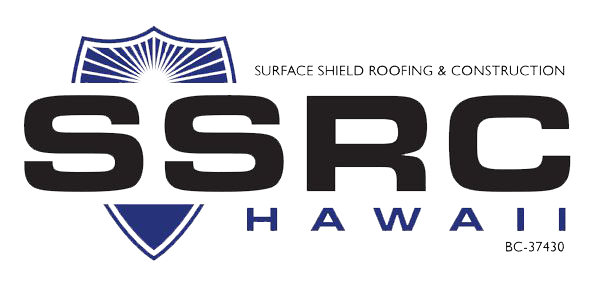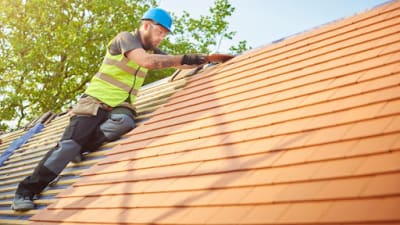Reveal Usual Roof Problems and Just How to Address Them Successfully
When it comes to your roofing system, detecting problems early can save you time and cash. What specific actions should you take to assure your roofing system stays in leading condition?
Recognizing Roofing System Leakages and Their Reasons

Following, examine your roof covering from the outside. Look for missing out on or broken floor tiles, rusted flashing, or harmed gutters.
Throughout heavy rainfall, observe your roofing for any type of merging water or drips. This can expose leakages that might not show up during completely dry conditions. By remaining vigilant and consistently examining your roof, you can capture leakages early and protect your home from additional damages.
Handling Missing Out On or Harmed Shingles
When you observe missing out on or damaged roof shingles, it's necessary to act rapidly to protect against further problems. You'll desire to recognize the extent of the damage, fix any kind of missing roof shingles, and take into consideration preventative maintenance suggestions to maintain your roof covering in leading shape. Taking these steps can save you money and time down the roadway.
Recognizing Shingle Damage
Although shingles are made to hold up against the aspects, they can still experience damage over time, leading to possible leakages and costly repairs. To identify shingle damages, begin by examining your roof for missing out on, broken, or curled tiles. On a regular basis monitoring your roof covering, particularly after severe climate, can assist you capture problems early and maintain the stability of your home.
Repairing Missing Out On Shingles
After finding shingle damages, the following action is dealing with any missing or harmed roof shingles immediately to avoid further issues. If you can, climb up onto your roofing safely, wearing appropriate equipment. Taking action quickly will aid keep your roofing system's integrity and expand its life-span.
Preventive Maintenance Tips
Exactly how can you keep your roofing in top form and avoid tiles from going missing or obtaining damaged? Inspect your roof at the very least twice a year and after serious weather condition (roofers oahu).
Keep seamless gutters clean and cost-free of debris to ensure proper water flow and protect against shingle damages. Cut overhanging branches to lessen the risk of them scuffing versus your roof during tornados.
Consider applying a safety sealer to extend your roof shingles' life-span. If you see any issues, address them without delay to avoid costly repair work later on. Taking these preventative actions can save you time and money while ensuring your roofing continues to be durable and trusted.
Recognizing Roof Ventilation Issues
Appropriate roofing air flow is crucial for maintaining the longevity and efficiency of your roof, as it helps control temperature and wetness levels in your attic. Without sufficient ventilation, you might face issues like excessive heat buildup, resulting in premature shingle wear and tear, or enhanced humidity that can cause mold and mildew development and timber rot.
To examine your roofing ventilation, check for signs of overheating, such as deformed tiles or a warm attic. Look for obstructed vents, which can limit air flow and trap heat. You need to guarantee your consumption and exhaust vents are balanced, permitting appropriate air exchange.
Addressing these problems quickly can safeguard your roofing and save you from pricey repairs down the line. Remain proactive in keeping your roofing system's air flow to safeguard your home.
Addressing Roofing Moss and Algae Growth
While you may appreciate the all-natural appearance of moss and algae on your roofing system, these microorganisms can result in substantial problems if left uncontrolled. They trap wetness, which can cause roof shingles damage and leakages. To tackle this issue, begin by getting rid of any noticeable development. Use a soft-bristle brush to carefully scrub away the moss and algae, taking care not to damage your roof shingles.
Following, think about applying a specialized roofing system cleaner or a blend of water and bleach to kill continuing to be spores. Regular inspections and upkeep will certainly aid protect against moss and algae from returning, guaranteeing your roof covering continues to be in excellent form for years to come.
Repairing Storm Damage and Wind Issues
After a tornado, it's essential to analyze your roof covering for damages triggered by high winds and heavy rain. Beginning by examining for missing out on or broken shingles, as these are usual casualties. If you see any type of, it is essential to replace them promptly to prevent leakages. Next, inspect the blinking around smokeshafts and vents; damaged blinking can cause water penetration.
Look for any kind of sagging locations, which may indicate water buildup or structural concerns. If you discover any kind of debris, like branches or leaves, remove them very carefully to avoid more damage. If your seamless gutters are clogged, clear them to assure appropriate water drainage.

For little repairs, you may handle it on your own, yet do not be reluctant to call an expert for considerable damage. Keep in mind, acting quickly can save you from larger troubles down the line, so take that assessment seriously and deal with any kind of concerns immediately.
Identifying Signs of Structural Damage
Just how can you inform if your roof is experiencing architectural damages? Beginning by looking for visible sagging or dips in your roofline. These indications show that the underlying framework might be compromised. Next, check for fractures or spaces in the wall surfaces or ceiling, as these can signify changing or settling due to check that roofing system problems. Focus on leaks or water spots, particularly in locations where the roof covering fulfills wall surfaces. If you see missing out on or damaged tiles, it's important to address them rapidly, as they can expose your roofing system to further damage. Examine your attic for any indicators of daytime glimpsing with, which might indicate your roof covering's stability is at threat. Pay attention for uncommon creaking or popping sounds, as they might suggest structural stress and anxiety. If you observe any of these signs, it's time to consult a roof covering expert for a complete evaluation.
Routine Maintenance Tips for Long Life

Regular Inspections Importance
Because a roofing system is your home's very first line of defense against the elements, regular examinations are vital for maintaining its integrity (roofing materials hawaii). You ought to check your roof a minimum of two times a year, preferably in spring and fall, to catch potential concerns early. Seek missing out on or damaged shingles, indicators of leakages, and any type of debris that can trigger issues. Pay close attention to areas around smokeshafts, vents, and flashing, as these prevail vulnerable points. If you see anything unusual, don't wait to call an expert for a detailed analysis. Keeping up with these inspections can protect against expensive repair work down the line and lengthen your roofing's lifespan, guaranteeing your home stays protected for years ahead.
Proper Seamless Gutter Upkeep
Regular roofing inspections naturally cause the significance of correct seamless gutter maintenance. Tidy your gutters at least two times a year to avoid obstructions from leaves, dust, and particles. If you live in a tree-heavy area, think about examining them more often. Utilize a sturdy ladder and wear gloves while eliminating the build-up. Evaluate your seamless gutters for leakages or corrosion; they can cause water damages to your roofing and home. Ensure downspouts straight water far from your foundation to stay clear of flooding. Setting up rain gutter guards can reduce debris buildup and decrease upkeep time. Finally, check for correct slope; gutters ought to slope towards the downspouts to guarantee suitable drain. By complying with these tips, you'll expand your gutters' life expectancy and shield your roof.
Often Asked Concerns
How Can I Select the Right Roof Covering Material for My Home?
To select the ideal roof covering material for your home, take into consideration environment, sturdiness, and looks. Research study options like asphalt shingles, metal, or floor tile. Think of upkeep Check This Out requirements and budget plan to locate what matches you best.
What Are the Signs I Required a Roofing System Substitute Rather of Fixing?
If you discover extensive leaks, drooping, or missing tiles, you might need a roof covering replacement. Also, if your roofing system's nearing its lifespan or has significant damage, it's time to consider a full replacement as opposed to simply fixings.
How Commonly Should I Arrange Expert Roof Covering Inspections?
You must schedule expert roof covering inspections a minimum of yearly, preferably in springtime or loss. This helps catch possible issues early, guaranteeing your roof continues to be in excellent problem and lengthening its lifespan.
Can I Install a New Roof Over My Old One?
You can install a new roof covering over your old one, however it's vital to check regional building regulations and guarantee the existing roof's problem is sound. This strategy can conserve money and time, but consider potential problems.
What Is the Average Life Expectancy of Various Roofing Products?
The average life expectancy varies by product: asphalt shingles last 15-30 years, steel roofing systems can last 40-70 years, while ceramic tile or slate roofs might go beyond 50 years. Select wisely based on your environment and budget.
Verdict
By staying watchful and attending to typical roofing troubles without delay, you can secure your home and extend your roofing's lifespan. With a little regular maintenance, you'll not just safeguard your investment however additionally delight in peace of mind knowing your roof my review here covering is in top shape.